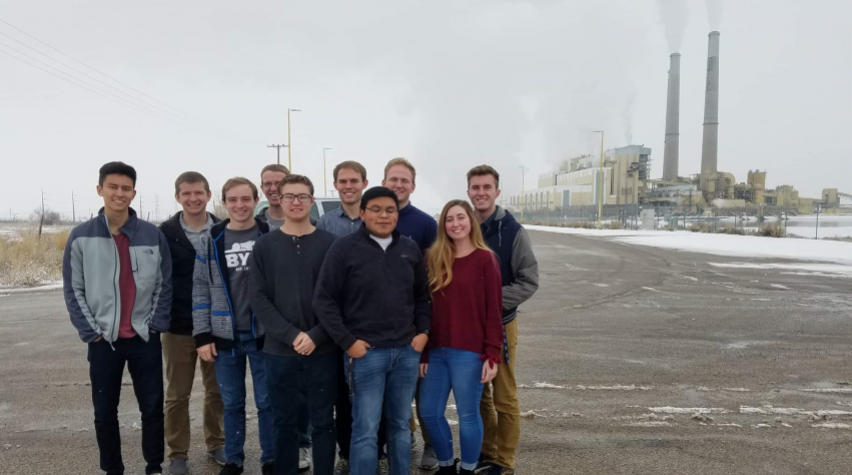
Is oil and gas the only industry that chemical engineers can go into? Of course not! Students at Brigham Young University (BYU), located in Provo, Utah, understand this and take advantage of opportunities closer to them. Regarding non-renewable resources, Utah has an abundant amount of coal and uses six different power plants to convert it into electric power. The plant nearest to BYU is the PacifiCorp Hunter Power Plant, pictured above.
Classroom concepts observed in the field
“It’s really nice having opportunities close to home for ChemEs,” says David Larsen, the BYU AIChE Student Chapter Secretary.
Real-world application is crucial to the success of an engineer, and BYU faculty and students notice that concepts from thermodynamics and heat transfer easily find their way into the energy industry. At the nearby PacifiCorp Hunter Power Plant, students are able to see twenty-story boilers producing high pressured steam that feeds into the plant and inevitably generates electricity. The unused steam is routed through heat exchangers and condensers to complete the cycle. The student chapter regularly makes plant tours to this facility to reinforce concepts learned in class.
After a safety orientation, students get a closer look at the mechanics and inner workings of the boilers and flue gas scrubbers. With burners hanging from the ceiling of the boilers, students find that process equipment sometimes doesn’t look the way we thought it would. Students are also able to network with BYU alumni who work in the power plant. The tours are always wrapped up with a Q&A, which gives students insights into professional development and industry.
Plant tours bridge the gap between the classroom and industry, helping students to transition into the world of professional engineering. The BYU AIChE Student Chapter doesn’t see its proximity to oil refineries as an issue, but as an opportunity to experience more fields that pertain to ChemEs.


